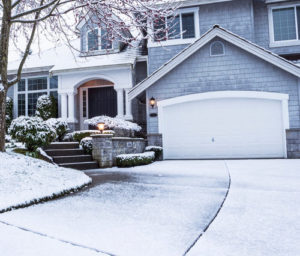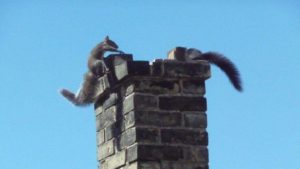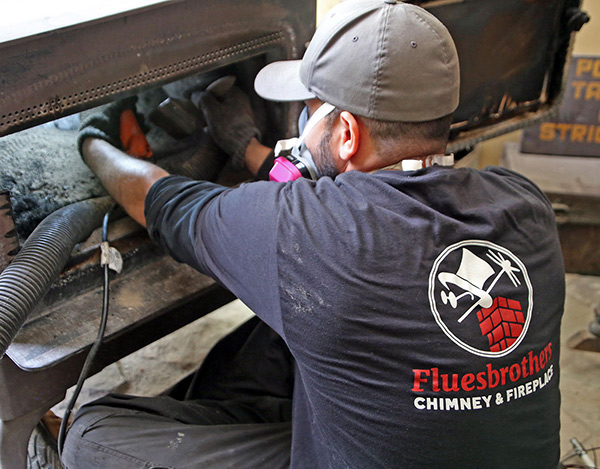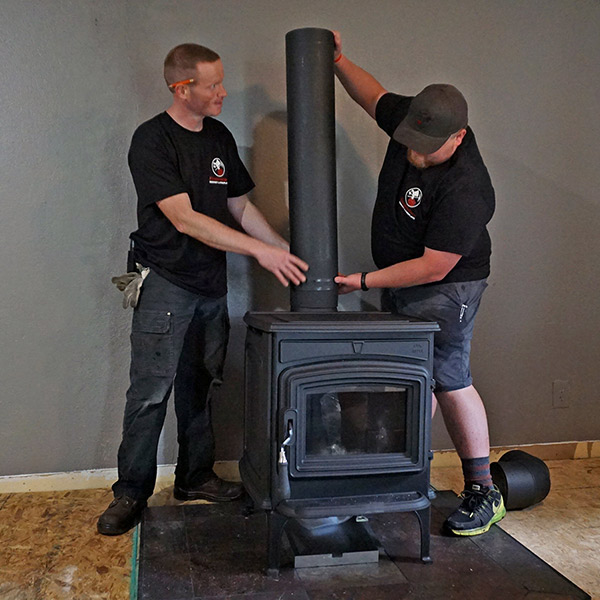Winter Maintenance Tips for Your Home
There are many issues that can arise during the winter months—things that affect the bills you pay and the safety of your home. The problems that affect your home this winter are not always caused by your fire appliance, your heater, or even neglect. Many problems arise because of weather, storms, damage, or other things entirely out of our control. In order for our customers to have the safest home possible this winter and every winter, we recommend these tips.
Gutters and Drains
Gutters and outside drains are great assets during freezing winters and wet springs. However, if they aren’t properly maintained, they can become a hazard. Leaves and debris left inside gutters and drains can cause a clog, allow your water flow to stall and freeze, and even lead to leaks and water damage outside the gutter system. A gutter problem doesn’t just affect the roof, eaves, and house. An overflowing or damaged gutter can lead to washout and damage to your landscaping and direct rainwater to your basement and foundation instead of designated drainage areas.
Weatherizing Windows
The only windows that do not need to be weatherized are those that are double-pane storm windows. There are specific models and brands of windows that will insulate your home despite the outside weather and temperature, but these windows are expensive and not usually in older homes. If you have a standard single-pane window, it should be properly winterized in order to save you money and prevent damage.
Screen Removal – If your windows have an outer screen, the screen should be removed during winter prep. Leaving the screens in the window can allow water to pass through the screen and then freeze against the window and the window sill. This not only leads to a temperature drop but also can ruin a wooden window frame and sill. Remove the screen and store upright in a storage closet, basement, or attic.
Storm Window Panes – If your single-pane windows have a screen, look around the basement and attic for replacement storm windows. These panes slip right into the space where the screen is removed. If your windows do not have storm window panes, remove the screen and plastic over your windows for insulation.
Window Insulation – Whether you have storm windows or simple single-pane windows, you can still add clear plastic insulation to your windows to help keep the cold out and keep your warm air in. You can hire someone to winterize your windows or purchase a window insulation kit at your local home improvement store to improve your home’s heat efficiency.
Lawn Maintenance
By the end of summer, we are excited to be finished with lawn care. We’re excited for the leaves to begin falling and celebrate as we put that weed trimmer and lawnmower in the shed for the winter. While we as homeowners are understandably finished with lawn care when autumn arrives, it’s important to trim your lawn before winter is in full force. Oftentimes, the grass stops growing, so we fail to cut it one last time. This makes raking more difficult when necessary and can hide hazards beneath high grass and then snow as fall turns to winter and winter to spring. Cutting your grass before winter arrives will mean a seamless transition back to spring and summer and will mean a healthier lawn and healthier microorganisms that help cultivate healthy soil.
Air Duct and Dryer Vent Maintenance
During winter months, we use air ducts and dryer vents more often than other times of the year. You may not even realize it, but you are likely spending more time than ever indoors, breathing recycled air that has been moving through your HVAC system over and over. You are also likely using the clothes dryer more often than in warmer months if you use a clothesline during the warmer months.
Whatever the reason, these systems are being used, and are oftentimes neglected. In order for a more efficient and safer central air and heating system, make sure you have your air ducts cleaned and sanitized as needed. When the system is maintained properly it will use less energy, will cycle and filter the air in your home better, and will last longer. Similarly, the clothes dryer vent will work better when it is cleaned annually. Not only will a clean dryer vent keep your family safe this winter, but it will help your dryer work better, work safely, use less energy, and last longer. Running your dryer multiple times for one load of clothes is a sign that there is a problem—and it’s a sign that costs you money! Schedule dryer maintenance now and see how much it saves you.
Chimney and Fireplace Maintenance
Homes that have a fireplace and chimney system are safer when they are maintained properly. Don’t take our word for it! The Chimney Safety Institute of America (CSIA) and the National Fire Protection Association (NFPA) both agree that the safest and most efficient chimney systems are those that are cleaned regularly and inspected annually. Ideally, a homeowner would schedule these important services before the burn season, but it isn’t too late.
Residents in Boston, North Shore, and Portland area can call and schedule a sweep or inspection with Billy Sweet Chimney Sweep anytime, year-round. Our aim is to make safe homes and warm hearths. Dial 617-469-4528 or contact us online.
The post Winter Maintenance Tips for Your Home appeared first on Billy Sweet Chimney Sweep.

 Excessive Creosote
Excessive Creosote
 Keeps the Animals Away
Keeps the Animals Away
 Chimney Inspection and Cleaning
Chimney Inspection and Cleaning Don’t Leave a Fire Unattended
Don’t Leave a Fire Unattended

 The combustion of wood produces several natural by-products, including soot, ash, and creosote, to name a few. Creosote starts as a powdery substance but will turn into a thick, crusty, and highly flammable material that is extremely difficult to remove if allowed to accumulate. And if the wood stove is not regularly cleaned, the inside of your
The combustion of wood produces several natural by-products, including soot, ash, and creosote, to name a few. Creosote starts as a powdery substance but will turn into a thick, crusty, and highly flammable material that is extremely difficult to remove if allowed to accumulate. And if the wood stove is not regularly cleaned, the inside of your  Smokey fires
Smokey fires Spa-like design has been trending for a while, making master bathrooms more beautiful than ever. A fireplace in the bathroom can provide an extra “wow factor” that makes your home feel like a veritable resort. Also, if you add a fireplace in your master bathroom, it would make you a design trendsetter! Even though a bathroom fireplace is a desirable feature among the majority of homebuyers surveyed, recent research revealed that only about 10% of all master bathrooms include a fireplace. This is an idea whose time has come.
Spa-like design has been trending for a while, making master bathrooms more beautiful than ever. A fireplace in the bathroom can provide an extra “wow factor” that makes your home feel like a veritable resort. Also, if you add a fireplace in your master bathroom, it would make you a design trendsetter! Even though a bathroom fireplace is a desirable feature among the majority of homebuyers surveyed, recent research revealed that only about 10% of all master bathrooms include a fireplace. This is an idea whose time has come. Zone heating, as referred to above, makes the best sense when everyone’s bedroom is equipped with a fireplace. Bedrooms can be enjoyed more than ever as individualized personal sanctuaries when there’s a fireplace to keep you warm and provide an ambiance that feeds the soul. There’s something about a mesmerizing fire that makes it an old-world luxury anywhere, anytime.
Zone heating, as referred to above, makes the best sense when everyone’s bedroom is equipped with a fireplace. Bedrooms can be enjoyed more than ever as individualized personal sanctuaries when there’s a fireplace to keep you warm and provide an ambiance that feeds the soul. There’s something about a mesmerizing fire that makes it an old-world luxury anywhere, anytime.